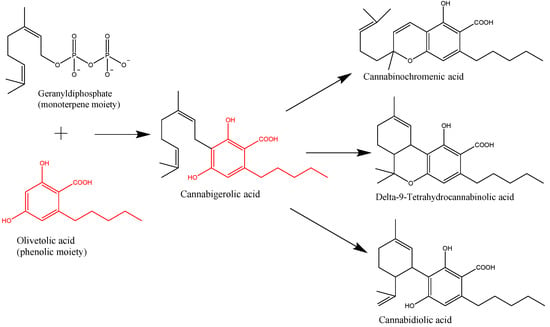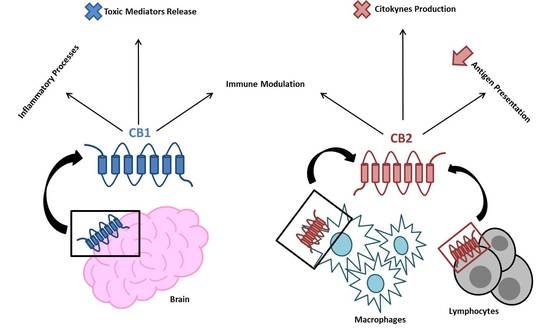 “Endometriosis affects a large proportion of women during their reproductive years and is associated with pain and infertility, also affecting psychological wellbeing and quality of life. The pathogenesis of the disease remains unclear, although it is believed to be multifactorial.
“Endometriosis affects a large proportion of women during their reproductive years and is associated with pain and infertility, also affecting psychological wellbeing and quality of life. The pathogenesis of the disease remains unclear, although it is believed to be multifactorial.
The endocannabinoid system (ECS) consists of a number of ligands, receptors and enzymes, and has gained interests in endometriosis research. This review aims to summarise all available evidence reporting the roles of the ECS in endometriosis.
A literature search of the PubMed, EMBASE, and Web of Science electronic medical databases was performed. Original and review articles published in peer-reviewed journals were included. No publication date or publication status restrictions were imposed.
Significant differences in the concentrations and expressions of the components of the ECS were reported in the eutopic and ectopic endometrium, and the systemic circulation of women with endometriosis compared to controls. Endometriosis appears to be associated with downregulation of CB1 receptors and upregulation of TRPV1 receptors.
The role of CB1 and progesterone in anti-inflammatory action and the role of TRPV1 in inflammation and pain are of particular interests. Furthermore, the ECS has been reported to be involved in processes relevant to endometriosis, including cell migration, cell proliferation, apoptosis, inflammation, and interacts with sex steroid hormones.
The ECS may play a role in disease establishment, progression, and pain in endometriosis. However, reports are based on studies of limited size and there are inconsistencies among the definition of their control groups. There are also conflicting reports regarding precise involvement of the ECS in endometriosis. Future research with larger numbers, strict inclusion and exclusion criteria and detailed clinical information is imperative.”
https://www.ncbi.nlm.nih.gov/pubmed/31785471
https://www.ejog.org/article/S0301-2115(19)30526-3/fulltext
 “This observational study examined the acute cognitive effects of cannabis.
“This observational study examined the acute cognitive effects of cannabis.

 “Endometriosis affects a large proportion of women during their reproductive years and is associated with pain and infertility, also affecting psychological wellbeing and quality of life. The pathogenesis of the disease remains unclear, although it is believed to be multifactorial.
“Endometriosis affects a large proportion of women during their reproductive years and is associated with pain and infertility, also affecting psychological wellbeing and quality of life. The pathogenesis of the disease remains unclear, although it is believed to be multifactorial. “Transcutaneous electrical nerve stimulation (TENS) promotes antinociception by activating the descending pain modulation pathway and consequently releasing endogenous analgesic substances.
“Transcutaneous electrical nerve stimulation (TENS) promotes antinociception by activating the descending pain modulation pathway and consequently releasing endogenous analgesic substances. “Available data support the notion that
“Available data support the notion that  “The purpose of this study is to gain a greater understanding of cancer survivors’ attitudes, perspectives, and concerns about medical cannabinoids (MCs) for cancer symptom and side effect management.
“The purpose of this study is to gain a greater understanding of cancer survivors’ attitudes, perspectives, and concerns about medical cannabinoids (MCs) for cancer symptom and side effect management. “Cannabis sativa L. is a plant long used for its textile fibers, seed oil, and oleoresin with medicinal and psychoactive properties. It is the main source of phytocannabinoids, with over 100 compounds detected so far. In recent years, a lot of attention has been given to the main phytochemicals present in Cannabis sativa L., namely,
“Cannabis sativa L. is a plant long used for its textile fibers, seed oil, and oleoresin with medicinal and psychoactive properties. It is the main source of phytocannabinoids, with over 100 compounds detected so far. In recent years, a lot of attention has been given to the main phytochemicals present in Cannabis sativa L., namely, 
 “Endocannabinoid system consists of
“Endocannabinoid system consists of 
 “As we learn more about the endocannabinoid system (ECS), our understanding and grasp of the system’s ubiquitous presence is expanding. In light of this, there is also a growing body of evidence for the therapeutic potential of ECS modulation in a range of clinical situations. Strategies include for example manipulation of the
“As we learn more about the endocannabinoid system (ECS), our understanding and grasp of the system’s ubiquitous presence is expanding. In light of this, there is also a growing body of evidence for the therapeutic potential of ECS modulation in a range of clinical situations. Strategies include for example manipulation of the  “Drug-resistant seizures are life-threatening and contribute to sustained hospitalization.
“Drug-resistant seizures are life-threatening and contribute to sustained hospitalization.